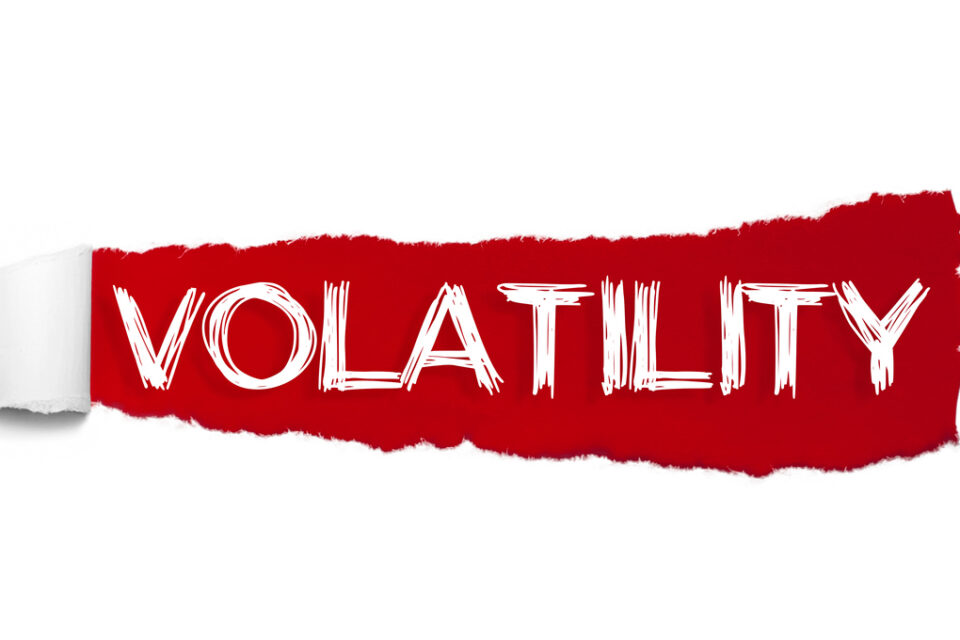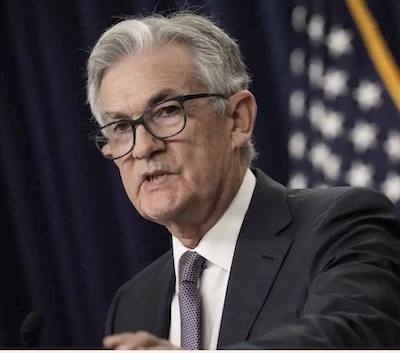Scott Kahan: What’s Up With This Volatility in the Bond Market?

Scott Kahan: What’s Up With This Volatility in the Bond Market?: Scott Kahan, Certified Financial Planner ™ professional and President of Financial Asset Management Corp. in Chappaqua and NYC, discusses the normalization of the economy as we leave the zero-interest rate era behind and how bonds move in trading ranges just like stocks.
What happened to our glide path down on bond yields?
 People expect when the Federal Reserve lowers rates and hints at further cuts that bond prices will march in orderly fashion up as yields decline. But bonds move in jagged lines in the short term while they follow their longer-term trajectory up or down just like stocks.
People expect when the Federal Reserve lowers rates and hints at further cuts that bond prices will march in orderly fashion up as yields decline. But bonds move in jagged lines in the short term while they follow their longer-term trajectory up or down just like stocks.
There are trading ranges for bonds too…
Exactly and bonds are in a trading zone now. The 10-year Treasury bond for instance that has recently risen to 4.3% from 3.75% has been more volatile than we would like to see. That can be confusing for some investors.
A year ago, the 10-year was at 4.875%. The Fed lowered rates a half point—in line with the performance of the 10-year Treasury. Today. So, the question is why the 10-year overshot Fed moves…
And why did it bounce back up?
The answer is that the market baked in future rate cuts shooting yields below current levels and with the economy showing continued strength the market is not as confident with the speed of future cuts. The market has been expecting another 50 basis point rate reduction in November to match Jay Powell’s September cut. Now, market sentiment is anticipating a 25-point cut in November and in general a slower glide down. So, bonds are trading in a range, awaiting future news, just like stocks do.
Is there any good news in all this?
Yes. It reflects the fact that the economy is doing well. Before the Fed’s cuts people who felt the Fed had waited too long to lower rates raised recession fears. The somewhat aggressive cut of 50 basis points with another expected in November seemed to suggest that the Fed shared those recession fears and was trying to make up for lost time.
But that didn’t play out…
That’s right. Nonfarm payrolls in September surged by 254,000, up from 159,000 in August and better than the Dow Jones consensus number of 150,000. The unemployment rate dropped to 4.1%.
Does that mean we’re back to worrying about inflation?
 I wouldn’t go that far. But this speaks to why I always tell my clients to focus on the long term and not to take the market’s daily roller coaster ride. When the Fed’s aggressive outlook was the prevailing narrative traders overshot and now that the Fed is dialing back expectations, they are correcting.
I wouldn’t go that far. But this speaks to why I always tell my clients to focus on the long term and not to take the market’s daily roller coaster ride. When the Fed’s aggressive outlook was the prevailing narrative traders overshot and now that the Fed is dialing back expectations, they are correcting.
Do you think the election has played into this?
Trump’s aggressive campaigning on a new regimen of tariffs and the inflationary effects they may bring, has caused concern with some of my clients and I suspect has also in the bond trading rooms. I don’t see how it couldn’t have some impact on their thinking, especially as his prospects have risen over the past thirty days.
What is the longer-term narrative for the markets?
The longer-term narrative is that we are getting to a normalized economy, not just after the pandemic but after over a decade of zero interest rates before that.
Consumer spending is strong. People are traveling and going out to dinner. Wages are growing faster than inflation and gas prices are down. I believe that is going to continue. And I believe the bull market in equities is going to continue. The average bull market lasts 46 months. We’re less than two years into it so there’s plenty of room to run.
What is the longer-term narrative for bond yields?
I think Powell will take a cautious but clear path down and I expect the 10-year Treasure to drop another 75 basis points to about 3.5%. Which is very close to the historical norm. With money market rates following down to 3.25% from their current level of 4.75%. I think that will happen within the next year.
How are you advising your clients to play the still higher money market rates against bonds?
 If you are asking when to move cash into bonds based on yields you are playing the wrong game. We use the money market exclusively for emergency funds to cover a year to 18 months of expenses. Money markets are a liquidity play and when those funds are drawn down, they are replenished with gains from equity and bond portfolios.
If you are asking when to move cash into bonds based on yields you are playing the wrong game. We use the money market exclusively for emergency funds to cover a year to 18 months of expenses. Money markets are a liquidity play and when those funds are drawn down, they are replenished with gains from equity and bond portfolios.
Even though they earn interest and currently provide healthy returns that’s a bonus. Remember if you start thinking of money funds as an investment and reach for yield by the time you want to move them into a fund or ETF bond prices will have risen. Not only did you miss the price appreciation but now you must extend maturities to grab yield and assume higher market risk. Not a good trade-off.
What’s are the issues your clients are dealing with on the equity side?
With markets moves in the past two years some of our portfolios are a little over in equities so we are rebalancing them. In some cases, we are moving to cash in others to bonds. But this is an ongoing process.
Sometimes a strong market run can be the most challenging part of investing. People have a tendency during good times to say, “let it ride” and may even suggest bumping their plan on a permanent basis from 60% to 70%.
It’s easy to do in when stocks are up and hard to swallow volatility returns so we try to maintain discipline on the allocations we set when we worked out our financial plans in the beginning.
And that’s how you take the worry out of investing…
That’s our motto.
Financial Asset Management Corporation has provided fee-only financial planning and investment management services for individuals and small businesses in the Tri-State area since 1986. They serve 175 clients and manage over 390 million dollars in assets. (26 South Greeley Avenue, Chappaqua, NY, (914) 238-8900; www.famcorporation.com )
More on What To Do from Scott Kahan here:
















